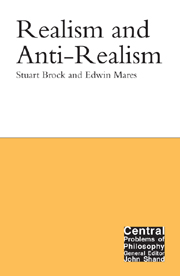7 - Colour
from Part II
Summary
In Part I we discussed whether there is a mind-independent world. Let us assume from here on that there is one. There is still room to debate whether or not everything we (apparently) talk about is real. Certainly, there is much controversy, at least in philosophical circles, about the reality of all sorts of things. And in Part II we shall take a close look at a selection of philosophical debates about the reality of a variety of contentious domains. We dedicate a chapter to each debate. While this is not really enough space to do full justice to any of these topics, it will serve as an introduction to each topic. More importantly, though, we hope to illustrate how the very general themes and rhetorical moves talked about in Part I are applied over and over again in each case. As with Part I, further reading is suggested at the end of each chapter for those who want to delve more deeply into a given topic.
With this in mind, there is no better place to start than with a discussion of the philosophy of colour. We have evolved to perceive the colours of objects, and no wonder. Without this ability, we could not see anything at all. It is by virtue of seeing the colours of objects that we can see their contours, edges and shapes. Even visibly transparent objects can be seen only in virtue of seeing and contrasting the colours of other objects in the immediate environment.
- Type
- Chapter
- Information
- Realism and Anti-Realism , pp. 95 - 112Publisher: Acumen PublishingPrint publication year: 2007

